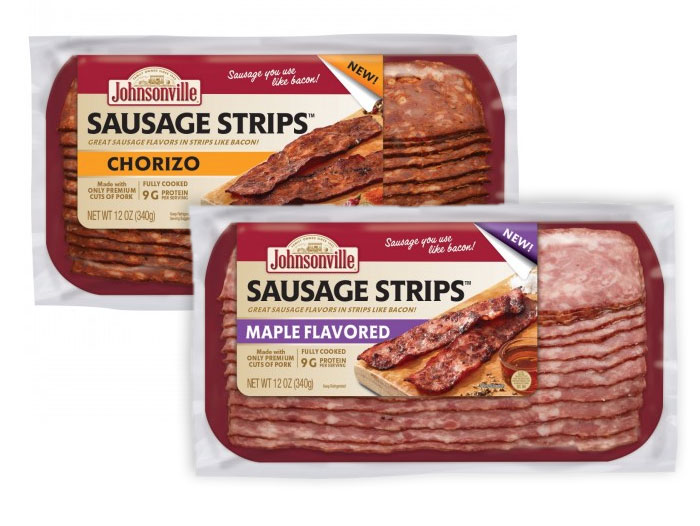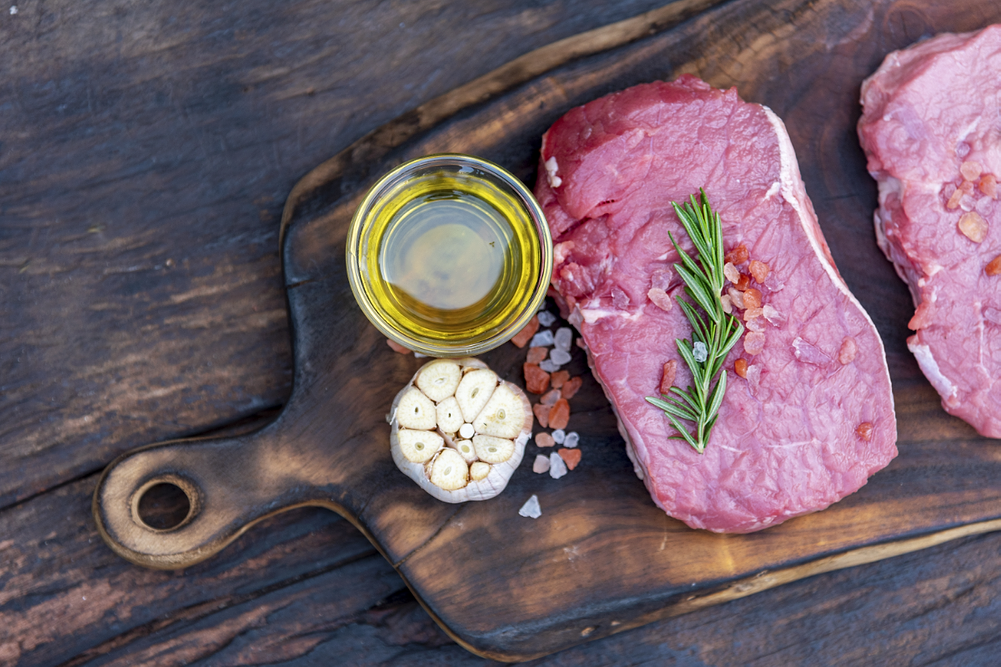CHICAGO — Clean ingredients are the new baseline for today’s shoppers, according to the “2020 US Grocery Shopper Trends,” a report produced by FMI – The Food Industry Association, Washington, DC, in collaboration with The Hartman Group, Bellevue, Wash. Shoppers are reevaluating their purchasing criteria and product assortment needs. They have a sharper focus on health, a heightened awareness of the environmental consequences of consumption and a desire for a deeper connection to food, according to the study. Ingredient legends matter.
Today’s shoppers bring a broader, more sophisticated range of criteria with them when shopping for groceries, including meat and poultry. They want foods to be as close to natural as possible, and that means no artificial ingredients. For meat and poultry, that means no synthetic colors, flavors or preservatives.
“We have meat and poultry customers that traditionally sold into school and hospitality sectors,” said Jane Quartel, executive director, food protection, Kalsec, Kalamazoo, Mich. “Those sectors are more tolerant of lengthier labels and synthetic inclusions. These customers are now switching gears and wanting to capture additional growth seen in the consumer markets, but the consumer is choosier and wants shorter, cleaner labels.”
Travis Krause, sales director, Kemin Food Technologies-Americas, Des Moines, Iowa, said, “Consumers are reaching for simpler, free-from and clean-label meat and poultry products, but taste is still at the top of their shopping list. Clean label meats resonate with consumers and their perceptions of quality, health and value.”
Clean is the future
Clean label is not a passing trend, it’s a movement that is here to stay. This is something that is proving to be even more valued during these uncertain times, as consumers are taking control of their health by being selective with what they put into their bodies.
Solutions based on vinegar and certain plant extracts – namely rosemary, green tea, acerola and celery – possess the unique ability to assist with extending the shelf life of meat and poultry by naturally preserving color, flavor and quality
“They have come a long way in recent years in rivaling the efficacy of traditional synthetic ingredients,” said Garrett McCoy, research and development manager, Corbion, Lenexa, Kan. “They make effective curing agents and provide antioxidant activity that delays rancidity and protects product color and flavor.”
The pandemic changed the way consumers shop, cook and eat. In addition to increased retail purchases, consumers were looking for products with longer shelf lives to decrease the number of trips to the store.
“At the same time, there is also increased demand for convenience and heat-and-eat items, as working from home while maintaining school schedules and juggling children and spouses at home increases the volume and number of meals being made per day,” Krause said. “Meat manufacturers have had to quickly pivot and determine the best business decisions to utilize inventory that wasn’t running through foodservice and in many cases look for ingredients to formulate for the longer shelf life demands required by retail.”
They discovered that vinegars and certain plant extracts are label-friendly options for extending the shelf life and safety of protein products. That’s what consumers want.
Research shows that natural product shoppers are not abandoning their focus during COVID-19, according to new research from Chicago-based IRI and SPINS. The study shows that consumers are doubling down on their food choices. They are widening their preferences through strategies such as seeking and avoiding various ingredients and carefully studying label claims and certifications. This has resulted in consumers purchasing more natural products in 2020, both pre-COVID-19 and during the current pandemic.
“Dollar sales for natural products continue to grow over one year ago, as much as an astounding 78% in the middle of March during consumers’ initial stock-up period and continuing in the high teens at present,” said Steve Ramsey, executive vice president and general manager of strategic accounts for IRI. “Given that natural products represent more than 8% of total store sales year-to-date and are outpacing sales of conventional products, there are significant opportunities for manufacturers and retailers alike to show support for consumers.”
Allison Turner, preservation product manager, Naturex, part of Givaudan, South Hackensack, NJ, said, “Consumers are mindful of the ingredients in their food and what is on their labels. While using plant extracts in meat and poultry is not a new concept, it is a key ingredient in meeting consumer trends in natural, transparency and simplicity.”
Power of plants
Rosemary leads the way in this area of functional plant extracts. Rosemary is primarily used to limit oxidation of fats and pigments, thereby helping retain product quality. Rosemary can be blended with other plant extracts to offer different levels of protection.
“One of the active components, carnosic acid, naturally protects the rosemary plant from heat and light when growing in the wild. That same compound provides a natural way to combat pro-oxidants, such as oxygen, light and temperature in meat and poultry,” Turner said. “Other plants have active compounds that protect fats during the different stages of the oxidation reaction.”

Proprietary consumer research by Naturex showed that the majority of consumers who are avoiding artificial preservatives are also concerned about nitrites and nitrates in meat. These compounds are commonly found in cured products, such as bacon, ham and sausages.
“Plant extracts can also be used as an alternative to traditional curing for meats,” said Tim Knight, preservation technical service specialist at Givaudan/Naturex. “Celery and Swiss chard have naturally occurring nitrates. When converted to nitrites, they can help preserve taste and color. They can be used along with acerola cherry, which is an alternative to sodium erythorbate.”
These vegetable sources of naturally occurring nitrite are familiar and recognizable to consumers and also offer convenience and predictability for processed meat manufacturers. Vegetable-sourced nitrite produces the same characteristic color, flavor and microbial control in meat products as traditional curing using sodium nitrite, according to Knight.
“Swiss chard is a growing option for applications where celery is not desirable because of allergen or sensitivity concerns,” Knight said.
Multi-functional vinegar
Vinegar is commonly used by meat and poultry processors as a food safety tool. It is one of the few products around today that has been in grandma’s kitchen for centuries, making it a clean-label ingredient. Often described as sour to the taste buds, vinegar ingredients have long been appreciated by meat and poultry processors for their contribution to tenderizing, preserving, enhancing flavor and even influencing color. Suppliers offer vinegar ingredients in dry and liquid extract format, with or without other functional or flavorful ingredients.
Acetic acid is the primary constituent of vinegar and the active compound. In terms of food safety, the undissociated acid penetrates microbial cell walls and once inside the microorganism, where the pH is near or above neutral, the acid dissociates, lowering the pH. With pH-sensitive microorganisms, including the pathogens and spoilage bacteria encountered in the meat and poultry processing and distribution environment, this change in pH impairs or stops growth. Further, the anionic parts of the organic acid, which are the negatively charged ions, that remain in the microorganism will accumulate, disrupting metabolic functions. This leads to an increase in osmotic pressure that destroys the microorganism.
Corbion conducted an online survey of 528 Canadians in March 2020 to better understand consumer perceptions regarding the labeling of vinegar ingredients in processed meat products. Those who qualified for participation in the survey said they had purchased or consumed ready-to-eat meat (RTE) products such as hot dogs, bacon or sausage, within the prior three-month period. Sixty-two percent of consumers surveyed feel “natural” is very important in RTE meat products. More than half (55%) stated they would buy RTE meats with buffered vinegar while 60% said they would purchase RTE meats with neutralized vinegar and 69% would purchase RTE meats with low acid vinegar.
“Low acid vinegar is perceived by consumers as being the most natural followed by neutralized vinegar,” McCoy said. “One thing that stands out among those consumers that are not extremely likely to purchase a product under any naming convention is they truly do not understand the ingredients’ functionality.”
This presents an opportunity to educate consumers as to why an ingredient is added to a product. Processors should note that there are varied vinegar ingredients in the marketplace.
“Buffered vinegars come in a wide range of pH levels and customers can choose from both liquid and powder formats, as well as organic and non-GMO options,” McCoy said. “Different pH levels work well in different applications, but in meat and poultry applications, it’s important that pH not be too low in order to avoid flavor impact and to preserve water-holding capacity and texture.”
Vinegar powder is part of the food safety system used in the manufacture of Johnsonville’s new Sausage Strips. It is combined with traditional preservatives to provide an extra level of protection.[/image-with-caption]At the same time, maintaining antimicrobial activity is essential to ensuring food safety and prolonging product freshness. There’s a fear factor driving consumer concerns about food safety, which has never been more important. Shelf life is important too, as shoppers stock up on foods to make sure they have what they need in the event of another lockdown.

“This can be especially tough for the makers of sliced and RTE products like sandwich meats,” McCoy said. “They must keep in mind that many consumers are out of work and have to look for lower price points, so cost efficiency is very much in focus for processors. And with so many consumers choosing curbside pickup and doorstep delivery options in their food shopping, manufacturers are hard pressed to deal with the need for greater temperature tolerance, so their products stay safe, fresh and stable longer under challenging conditions.”
Knight concluded, “Consumers may be keeping meat and poultry products longer in their freezer as they stock up on these items. Prevention of oxidation is particularly important for fully cooked products that are stored in the freezer. Plant extracts can be added to formulas to help prevent the development of objectionable oxidative flavors and odors in frozen meat and poultry products that develop over time.”





